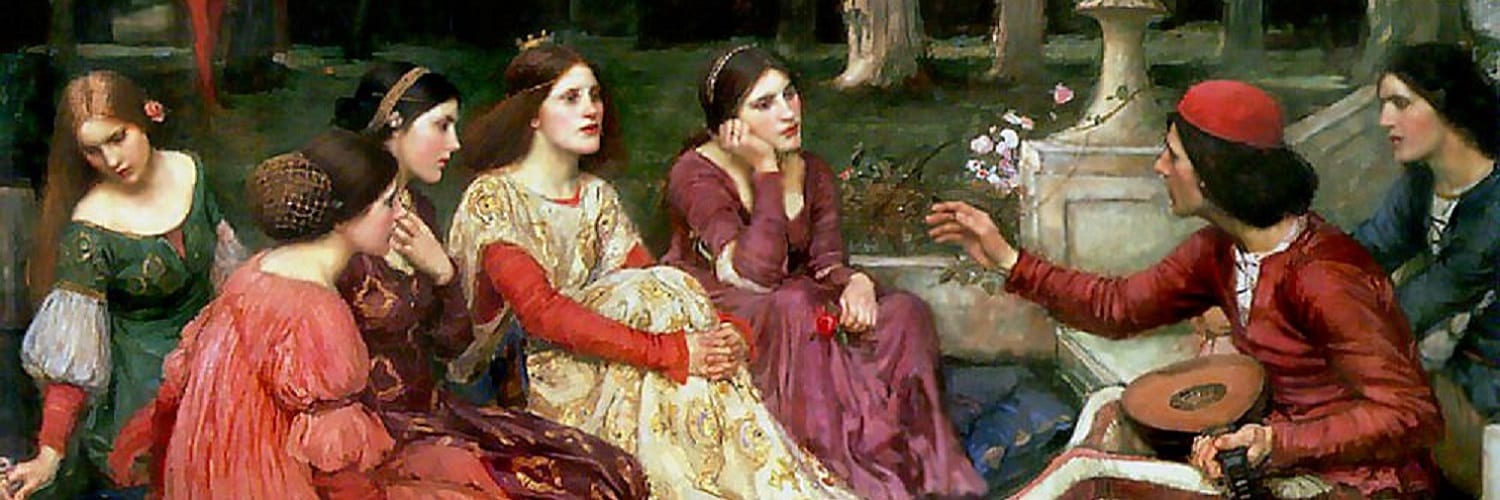Boccaccio, "The Decameron" (Introduction & First Story)

The bubonic plague (“Black Death”), which arrived in Italy from China in 1347, killed between a third and half of the Eurasian population. In Boccaccio’s "The Decameron" (1353) ten young people seek refuge from the monotony and misery of the plague as it ravages their city of Florence, by gathering together in a country house to tell each other stories. Despite all the innumerable changes that separate our world from that of 14th-century Italy, Boccaccio’s description of life in the midst of a pandemic is startlingly familiar. And the plan cooked up by the young people, in response to the shuttered buildings and the grim diet of news, is a strategy for psychic survival from which we can learn a great deal.
Background to "The Decameron"
Presented by Barry McCrea
Boccaccio’s world, “The Decameron” as pandemic literature, the problems it addresses, how they might be relevant to today.
Run time: 5 minutes
The Black Death in Florence
Presented by Barry McCrea
Boccaccio’s depiction of life in Florence during the plague.
Run time: 7 minutes
Psychic survival in a pandemic
Presented by Barry McCrea
The plan invented by the characters in “The Decameron” for their psychological protection and what we might learn from it.
Run time: 6 minutes
View the Event
Presented by Barry McCrea
Subscribe to the ThinkND podcast on Apple, Spotify, or Google.
Featured Speakers:
- Susan Ohmer, The William T. and Helen Kuhn Carey Associate Professor of Modern Communication, University of Notre Dame
- Kieron Webb, Head of Conservation, British Film Institute
- Rev. Jim Lies C.S.C., Director for Academic Initiatives & Partnerships, University of Notre Dame, London, England
Additional Resources
Presented by Barry McCrea
- Pasolini’s film version of “The Decameron” “Il Decameron ” (subtitles available by clicking cc)
